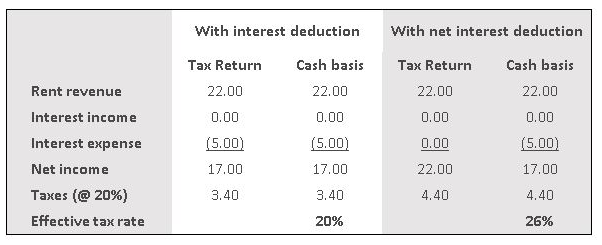![]()
The fundamental idea of lowering rates and simplifying America’s tax system may sound like a good idea, but it will not necessarily make business any easier within the equipment leasing and finance industry. Rather than leveling the playing field, like all economic policy changes it will produce new winners and losers, and has the potential to cause market upheaval.
Tax reform proposals go well beyond the impact they may have on a company’s tax return, as the ripple effect touches equipment acquisition decisions, usage models, and business approaches. For example, the provision allowing businesses to write off 100% of the cost of equipment investments will create an ownership bias among lessees. After all, if we can write off all of it at once, we might as well own the asset. While not a new challenge (our industry has dealt with this before), it does represent a potential obstacle to leasing.
The bigger issue in the Republican Blueprint, and the one Equipment Leasing and Finance Association (ELFA) has been fighting, is the element that will limit interest deductions to the amount of interest income. In fact, this was among the association’s talking points during its Capitol Connections event earlier this year. Lessors offering tax-oriented leasing transactions, such as in aircraft, rail, and industrial machinery with high residuals, will see benefits reduced and costs go up as a result of the net interest rule. On the bright side, true tax leasing is made much more attractive for lessees than acquiring equipment with debt.
With respect to the net interest deduction, banks will be winners in tax reform as currently outlined, because they have considerable interest income; this will enable them to offset their interest expense against that income. On the other hand, commercial trucking or fleet lessors that have a lot of rent income for tax purposes are going to be sitting on debt not covered by interest income. That’s a significant competitive-pricing differentiator, unless the House Committee on Ways and Means makes some adjustment to allocate rents to interest and principal for purposes of this rule.
A case can be made that rent should contain an interest component, particularly given how the new lease accounting rules are working. If rent is deemed to contain interest, though, how will it be determined? Will it be imputed at the accounting implicit rate, the Federal Funds Rate, or something else? Such a juxtaposition of financial reporting and tax reporting concepts can have far-reaching effects beyond this issue.
Fortunately, for the equipment leasing industry, the proposal as it stands heavily favors leasing in the lease-buy decision, as many lessees do not have sufficient interest income against which to offset interest expense. The indefinite carryforward of the unused interest expense also creates a selling tool for true leasing.
Net interest rules, as they stand, would result in the following:
- Loan-heavy finance providers would be favored while asset-oriented financiers, such as high-tech and transportation lessors, would be punished.
- A disincentive to hold and fund tax deals, particularly as an independent or vendor funding partner, would exist.
As an illustration of this problem, consider a rail lessor. Under this business model, none of the interest expense associated with acquiring leased assets would be deductible.

The pricing needed to dig out of this hole would not be acceptable in today’s market — although using book income (if made part of the final rules) combined with residual value insurance would solve the problem. A reverse play on the nonrecourse debt rules might be another possible solution.
Managed solutions is a current hot topic in the industry. This new trend also would be negatively affected by the net-interest deduction proposal. Most of the executives looking at doing managed solutions transactions (MSTs) are captives or independents and they will lose the ability to use interest deductions in the equation when bundling equipment and services. Customers are already unwilling to pay what some lessors are offering in these consumption models, and the situation will only get worse.
Other key elements of tax reform being considered include repealing the corporate alternative minimum tax (AMT); and, allowing net operating losses (NOLs) to be carried forward indefinitely and to be increased by an inflation factor. In that case NOLs would not be allowed to be carried back, and the utilization of NOL carryforwards would be limited to 90% of the net taxable amount for the year.
Tax reform has the potential to create market upheaval within the equipment leasing industry and remains an evolving process. A Reuters news story in July, for instance, noted that rather than lowering the rate to a flat 15%, the Trump Administration is now considering adjusting it to 20% or 25%.
One can debate how likely it is that tax reform and the Dodd-Frank relief being bundled with the proposed budget legislation will actually materialize this year. However, based on news accounts from Washington, D.C., and the failure of Republican senators to unite behind new healthcare legislation, tax reform does not appear likely in 2017.
Next Month: Part Two of this series, "Will Tax Leases Remain Viable When Reform Eliminates GPTD?"